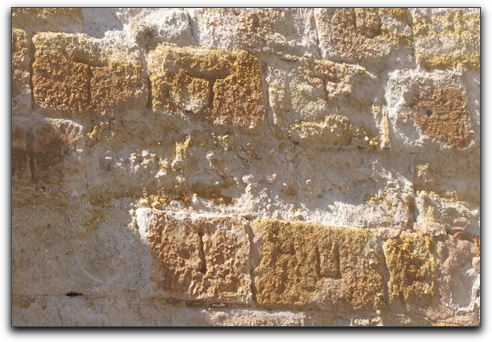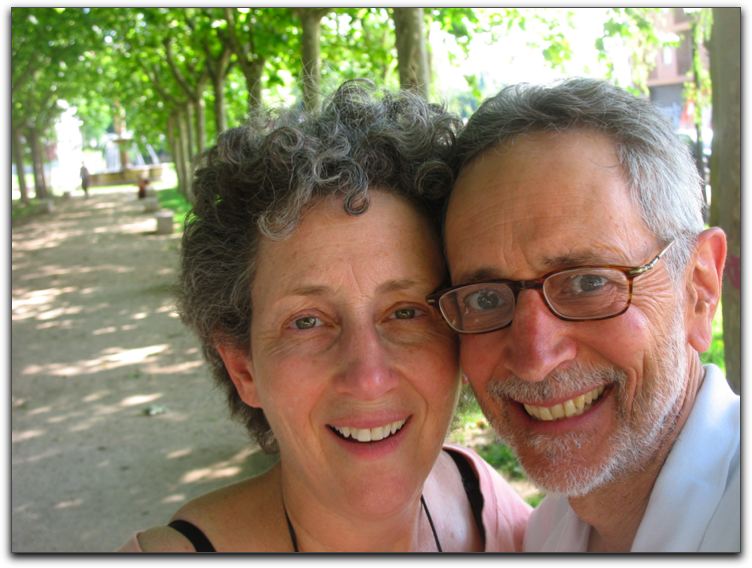
From the other direction:
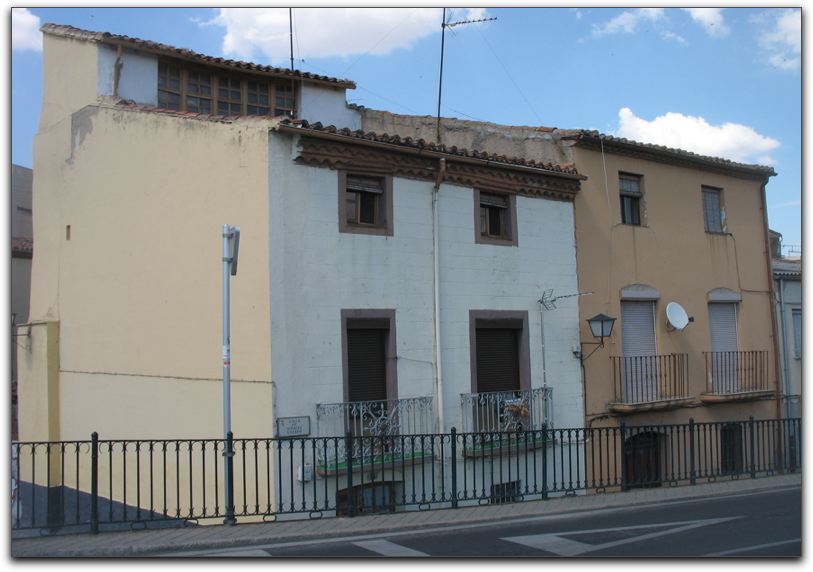
The synagogue was on the southern edge of the city. It faces the Duero river and the old Puente Viejo.
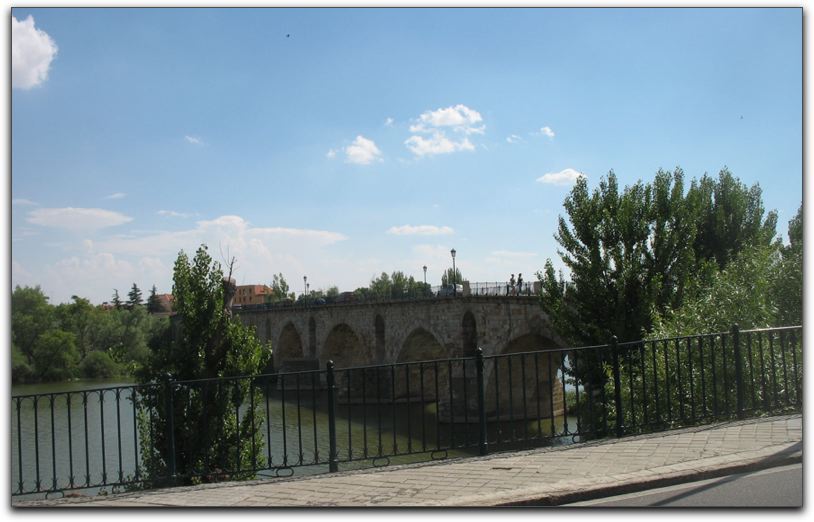
You could easily skip Zamora. The new superhighway begins immediately to its south and ends at its northern border. However, our Jewish guidebook identified Zamora as a Jewish transit center on the way to Portugal following the Expulsion of 1492.
For us, it was an intriguing stop on the way from Salamanca to Astorga where we knew of yet another chocolate museum.
The guidebook also identified a local Juderia and synagogue as well as a puzzling reference to:
Certain stones preserving Hebrew letters have been identified in a wall near the Plaza de Santa Ana, some distance N of the town centre.
After driving into the old city and finding a parking spot released when a wedding service ended, we walked into the center and got a map from the local police station. There we were able to identify the location of the synagogue we sought and determine the general location of the “lettered wall.”
Oddly after walking past the street twice, we were unable to find any signs and even the locals, when asked, pointed us in the wrong direction.
We took a break during the heat of the day in the library of one of the local hotels. We have used hotels as “service centers” in our travels. Most of the time, the clerical staff is quite welcoming. They allow us to relax in the lobby, use the facilities, and often we are able to tap into the wireless Internet access they have. This particular hotel, part of the nH chain which seems to be a particularly popular high end hotel in Spain, turned out to be the location for the reception of the wedding we had encountered earlier. They did not have any Internet access for us, but the facilities and the library were clean, well lighted and cool. Oddly enough, their New York offices are on the 8th floor of the same building as the CCAR office.
We eventually found the likely building for the synagogue at #15 Calle Ignacio Gazapo. The entry is below the current street level:

From the other direction:

The synagogue was on the southern edge of the city. It faces the Duero river and the old Puente Viejo.

Approximately a half mile away, on the opposite end of the old city is a wall. Along one small portion of it is a tiny plaza that even the proprietors of the bar that opened onto it could not identify as being the Plaza de Santa Ana. Carved into a number of the square blocks of this wall are some geometric shapes. The stones do not seem to have been moved from some other use in some other wall, but, we’re not archaeologists. Mark photographed a number of stones that looked more like Hebrew letters than most.
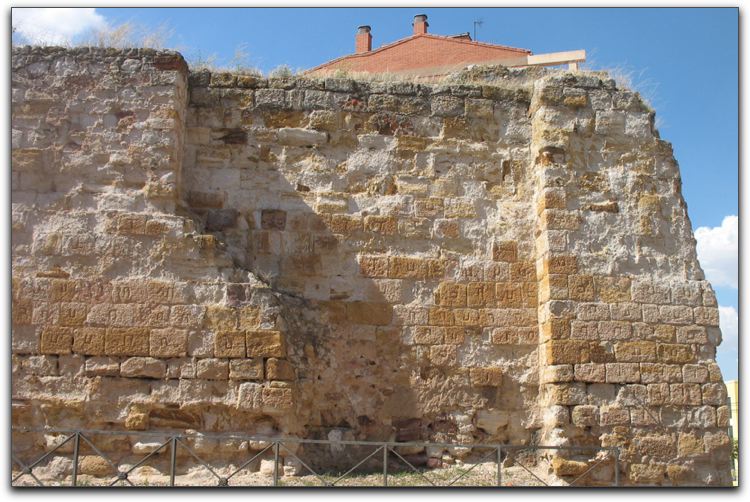
Someone, sometime, decided these carvings looked like Hebrew letters. They also look like geometric shapes. Even in the heat of the afternoon sun Mark could not hallucinate sufficiently powerfully enough to conjure up actual letters… to the exclusion of anything else. There appeared to be no sequence to the “letters”. There appeared to be shapes that definitely did not look like Hebrew letters. So, what made whatever commentator initially describe them as such?
Let’s be real generous now (from right to left) Maybe that’s a Shin: ש followed by a Tet: ט then a Ḥet: ח. Maybe…

This row (again right to left), well, it looks more like the letter in the block on the right in the preceding photo that may have a Shin: ש, but it looks more like a U followed by what may be a Tav: ת and then on the left… a Final Mem: ם? Give me a break, that looks more like a square than anything else. Second row; there’s that U again, followed by a U with “wings.” And, no, those are not little memos to God written on paper and squeezed in between the rocks.
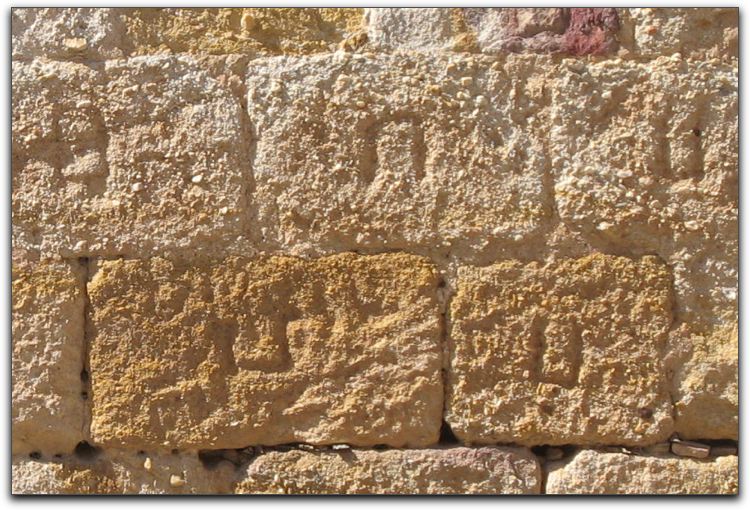
Now, in this photo, is that a T or a Dalet: ד or a Zion: ז? Then in the second row we have that U again and a vertical line which could be an I, or, if you want it to be a Hebrew letter a Final Nun: ן Or a Vav: ו. Get real!
